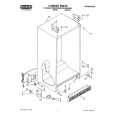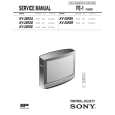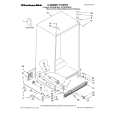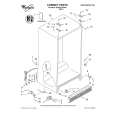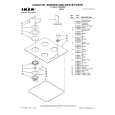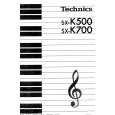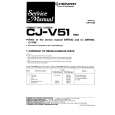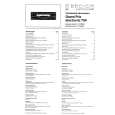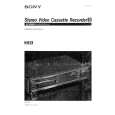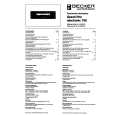|
|
|
Kategorie
|
|
Informacje
|
|
Polecamy
|
|
|
 |
|
|
Dla tego produktu nie napisano jeszcze recenzji!
 ;
Dokładna dokumentacja, pomogła w szybkiej naprawie telewizora. Dziękuję!
 ;
jedyne do czego mogę mieć zastrzeżenie to jakość zdjęć zawartych w przesłanej instrukcji serwisowej ponieważ są fatalnej jakości, praktycznie nieczytelne. tak poza tym jestem zadowolony to jest to czego szukałem.
 ;
Wszystko w porządku.
Instrukcja czytelna i kompletna.
Dziękuję.
all right!
thank you.
 ;
Bardzo dobra instrukcja. Zawiera wszystko co potrzeba, polecam!
 ;
Instrukcja jest OK. Schematy czytelne, opisane niektóre procedury.
CIRCUIT OVERVIEW (continued)
INTEGRATED CIRCUITS ICX2201 is a chroma decoder. It receives luminance and chroma signals and decodes them to YUV video with synchrony. The diagram shows the connections of the luminance signal to the synchrony inputs. This is because the chip extracts the horizontal and vertical sync pulses from the luminance composite sync. The YUV video and sync from the ICX2201 are fed to the ICX2200 at pins 5 (IN2-3), 4 (IN2-2), 3 (IN2-1), 1 (IN2-H), and 2 (IN2-V). The ICX2200 is an RGB video processor and switch that supports multi-scan capabilities. This switch has four inputs: � IN2 (pins 1-5): This input is used for the YUV video from ICX2201. It is selected by the microprocessor whenever the set is in NTSC mode by setting the input-SEL register to 0. � IN3 (pins 7-11): This input is connected to the rear jackpack through connector 8VGA2. When this input is selected the microprocessor sets the input-SEL register to 1. � Two signals, F0 and FH_STATUS, use the deflection circuit to switch the frequency of the deflection circuit between 15KHz and 37.9KHz. � The sandcastle pulse (SCP) and Vertical timing pulse (VTIM) are fed back to the ICX2200. This is used as a reference for the internal blanking circuit and the AKB timing generator. And accepts from the deflection circuit: � The fly back pulse (H-FBP) is used for synchronizing the deflection with the H-DRV pulse generated in the IC. H-PROT signal is used in shutdown protection. V-PROT is used to protect the CRT. The ABL signal is used by the ICX2200 and ICX2600 to regulate the size of the vertical and horizontal size and the current of electronic beam.
� � �
VIDEO PROCESSING
COMB FILTER The function of the Glass Comb Filter is to separate the composite video signal into Luminance (Y) and Chrominance (C) signals with a minimum amount of Cross Luminance and Cross Chrominance. The Glass Comb Filter is a hybrid integrated circuit together with a glass delay line combined into a five-pin package. The filter converts the composite signal to an acoustic signal using a piezoelectric transducer. The acoustic signal is sent through the glass delay line where it is delayed by one horizontal scan line. It is then converted back to an electrical signal. This is called 1H delay, which corresponds to one horizontal scan line time period. Hence the name 1H COMB. This current undelayed line is summed with the delayed line to give Y_COMB and subtracted from the delayed line to give C_COMB. This is made possible by the interleaving of Luminance and Chrominance signals during one horizontal scan line. The glass comb filter receives composite video from ICX2900 pin 36 (Vout2) and separates it into Luma (Y) and Chroma (C) signals. The Luma (Y) signal passes through a 3.58MHz Trap in order to eliminate the residual signal of Chrominance, and then is sent back to pin 9 (YinS1) and pin 48 (Yin1) input with different levels (because the levels of the signals are different to RF and CV). The Chroma (C) signal goes to two different 3.58MHz Band Pass Filters decoupled by an emitter follower (one for RF and the other for CV) in order to eliminate the Luminance signal from the chroma signal of each input. Then it is sent to pins 11 (CinS1) and 40 (Cin1) inputs of ICX2900.
IN4 (pins 13-17): This input is connected to the front jackpack connector 6F1 located in front of the set. The microprocessor selects it by setting the input-SEL register to 2. � IN5 (pins 19-23): Not used. The output of the ICX2200 is three lines of video (RGB) and two lines of sync (HV). The RGB lines are connected to the video output board and the Sync (HV) lines are connected to the input of ICX2600. The video output board gets the RGB output from the ICX2200 to drive the CRT. It also returns a signal (IK � Cathode current) to pin 41 (IK-IN) of ICX2200. This is used to control the correct black level of the three amplifiers (AKB circuit). ICX2600 is a deflection processor and compensation circuit for multi-scan signals. This IC accepts the output sync from ICX2200 and generates the signals needed for the large signal deflection board. Since CS Chassis sets use only two formats (NTSC using 15KHz at 60Hz, and 37.9KHz at 60Hz), the IC uses point scan mode and all other frequencies are set as invalid. ICX2600 generates signals: � Horizontal drive (H-DRV), East-West correction (EW), and positive and negative Vertical ramps (+VDRIVE, -VDRIVE) used in the horizontal and vertical deflection circuit. � Vertical Parabola (VPARAB) and Horizontal Sawtooth (Hsaw) are both used in the dynamic focus circuit.
�
SR23 - 923-03509
3-2
CS - SERVICING
|
|
 |
> |
|
